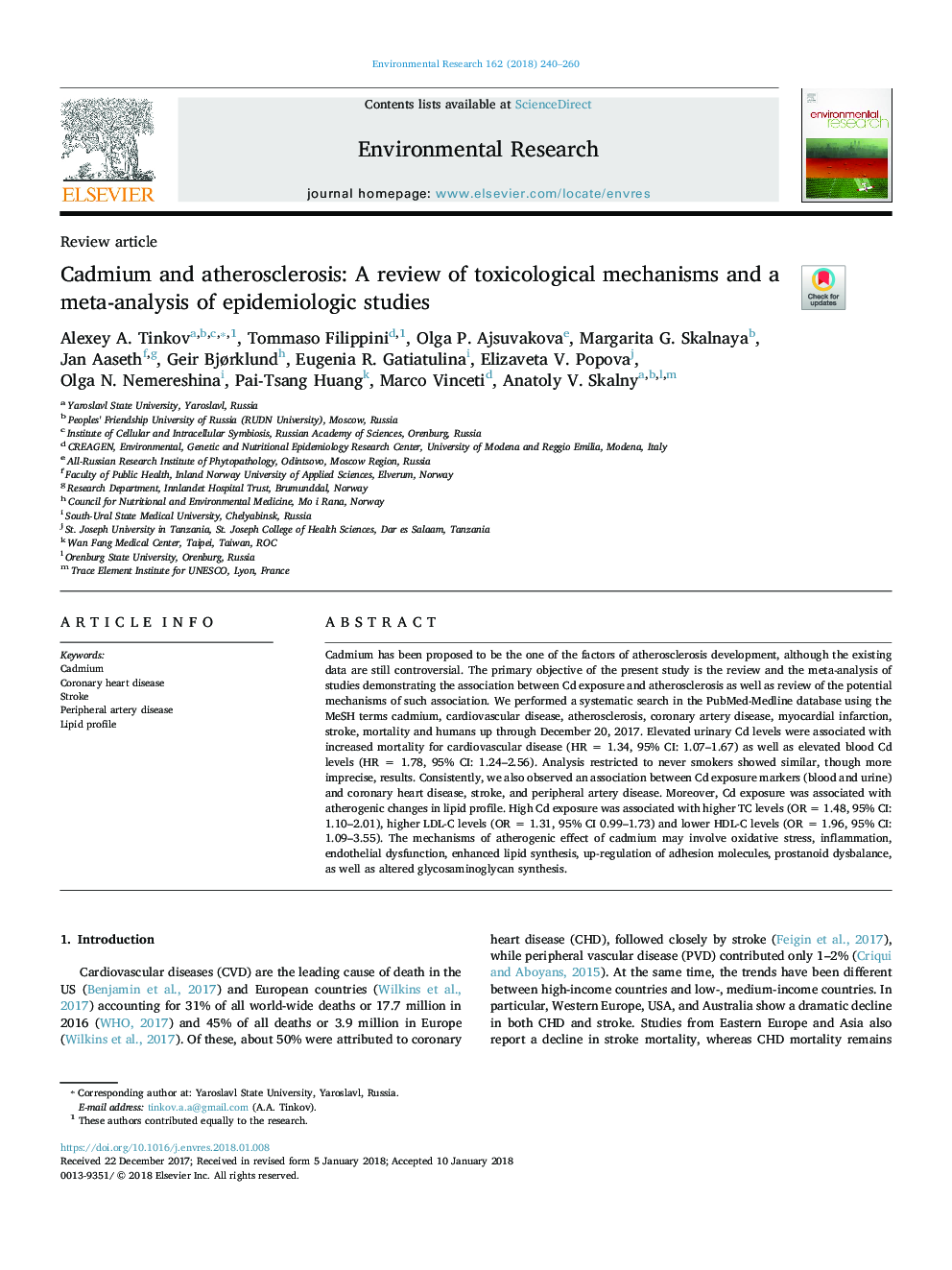| Article ID | Journal | Published Year | Pages | File Type |
|---|---|---|---|---|
| 8869143 | Environmental Research | 2018 | 21 Pages |
Abstract
Cadmium has been proposed to be the one of the factors of atherosclerosis development, although the existing data are still controversial. The primary objective of the present study is the review and the meta-analysis of studies demonstrating the association between Cd exposure and atherosclerosis as well as review of the potential mechanisms of such association. We performed a systematic search in the PubMed-Medline database using the MeSH terms cadmium, cardiovascular disease, atherosclerosis, coronary artery disease, myocardial infarction, stroke, mortality and humans up through December 20, 2017. Elevated urinary Cd levels were associated with increased mortality for cardiovascular disease (HR = 1.34, 95% CI: 1.07-1.67) as well as elevated blood Cd levels (HR = 1.78, 95% CI: 1.24-2.56). Analysis restricted to never smokers showed similar, though more imprecise, results. Consistently, we also observed an association between Cd exposure markers (blood and urine) and coronary heart disease, stroke, and peripheral artery disease. Moreover, Cd exposure was associated with atherogenic changes in lipid profile. High Cd exposure was associated with higher TC levels (OR = 1.48, 95% CI: 1.10-2.01), higher LDL-C levels (OR = 1.31, 95% CI 0.99-1.73) and lower HDL-C levels (OR = 1.96, 95% CI: 1.09-3.55). The mechanisms of atherogenic effect of cadmium may involve oxidative stress, inflammation, endothelial dysfunction, enhanced lipid synthesis, up-regulation of adhesion molecules, prostanoid dysbalance, as well as altered glycosaminoglycan synthesis.
Related Topics
Life Sciences
Environmental Science
Health, Toxicology and Mutagenesis
Authors
Alexey A. Tinkov, Tommaso Filippini, Olga P. Ajsuvakova, Margarita G. Skalnaya, Jan Aaseth, Geir Bjørklund, Eugenia R. Gatiatulina, Elizaveta V. Popova, Olga N. Nemereshina, Pai-Tsang Huang, Marco Vinceti, Anatoly V. Skalny,
